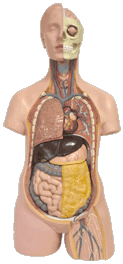At WiseGEEK, we're committed to delivering accurate, trustworthy information. Our expert-authored content is rigorously fact-checked and sourced from credible authorities. Discover how we uphold the highest standards in providing you with reliable knowledge.
What Is Aggressive Fibromatosis?
Aggressive fibromatosis, also known as a desmoid tumor, is a rare type of non-malignant tumor which originates in the connective tissue of the body. These tumors do not have the capacity to spread throughout the body, although they may cause a considerable amount of localized damage. Symptoms depend upon the location of the tumors and and may include pain or internal bleeding, although most patients will not experience any negative symptoms associated with this condition. Treatment normally consists of surgical removal of the tumors if they are causing problems, although those not leading to any uncomfortable of harmful side effects may be periodically examined for changes. Any questions or concerns about aggressive fibromatosis or the most appropriate treatment options for an individual situation should be discussed with a doctor or other medical professional.
Even though aggressive fibromatosis is considered to be a benign condition, the tumors can cause a lot of damage, even to the point of causing organ failure. Desmoid tumors are not generally thought of as cancerous, although in many ways, they do act in much the same way as cancer. The tumors lack the ability to spread throughout the body, but they are able to destroy tissues and organs near the location where they develop. The exact cause of aggressive fibromatosis is not clearly understood, although there appears to be a genetic component. It is quite common to find that a patient diagnosed with this condition also has family members with desmoid tumors.

In the majority of cases, there are no specific symptoms which would indicate the presence of aggressive fibromatosis. If the tumor is close to the surface of the skin, a painless lump may be apparent. Many times, this condition is diagnosed through the use of routine diagnostic tests or after symptoms begin to develop.
Treatment for aggressive fibromatosis typically involves surgical removal of the tumor, although there is a high rate of recurrence with surgery alone. Depending upon the location of the tumor, surgery may not be a viable treatment option. Radiation therapy, chemotherapy, and the use of prescription medications are often used to treat aggressive fibromatosis, either with or without surgery. In the beginning stages, the tumor may be monitored, and treatment may be delayed until symptoms develop or damage to surrounding organs and tissues develops. It is important for the patient to discuss the benefits and risks of each treatment option before deciding upon the most appropriate treatment plan.
AS FEATURED ON:
AS FEATURED ON:










Discuss this Article
Post your comments